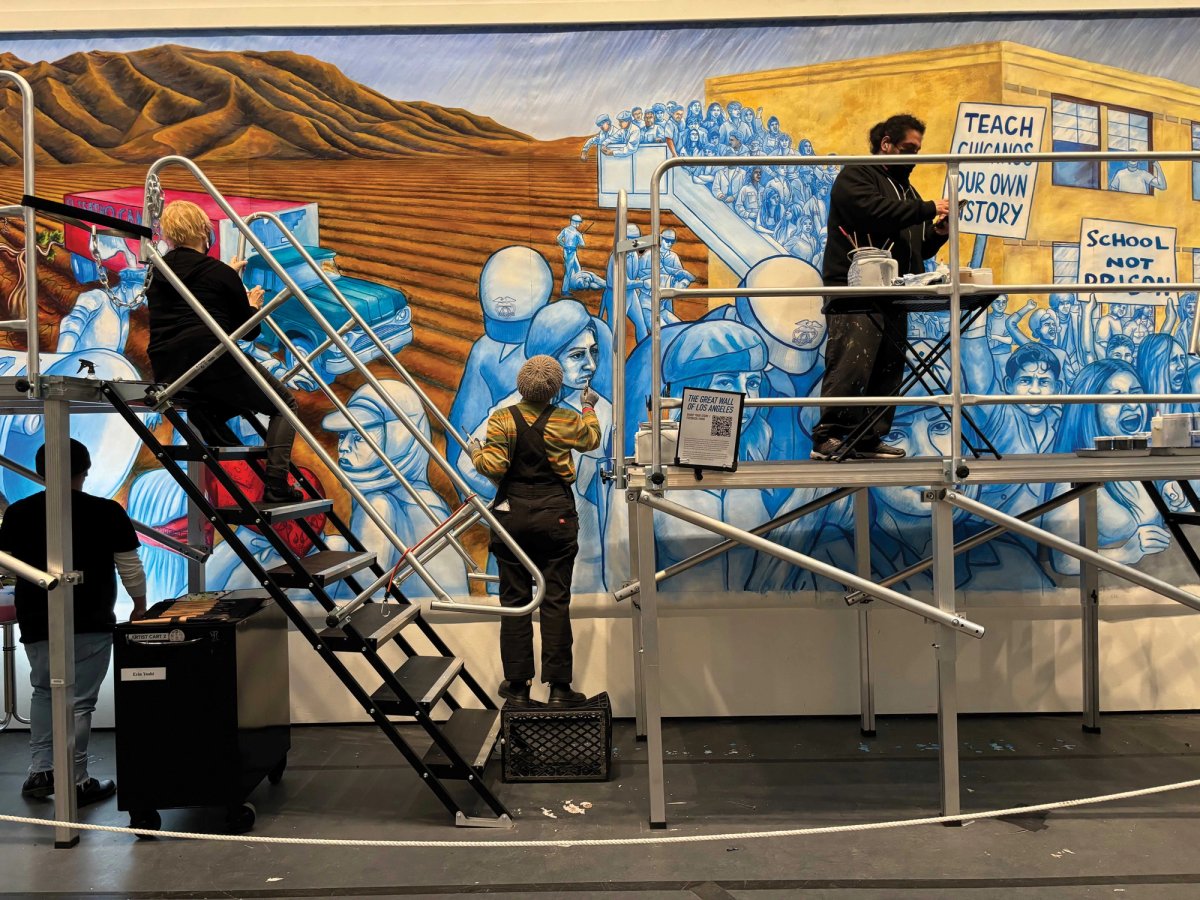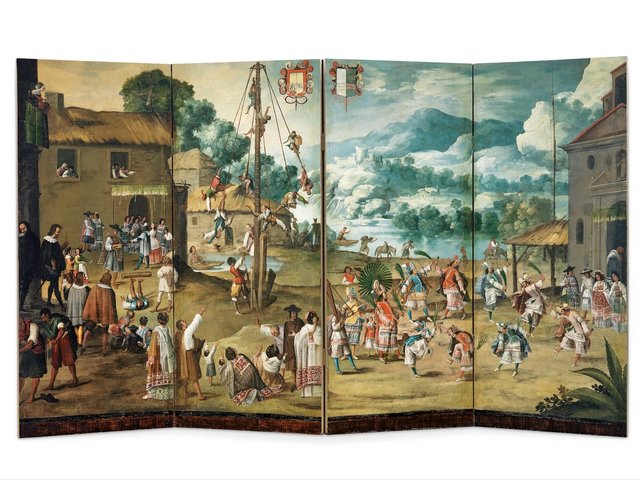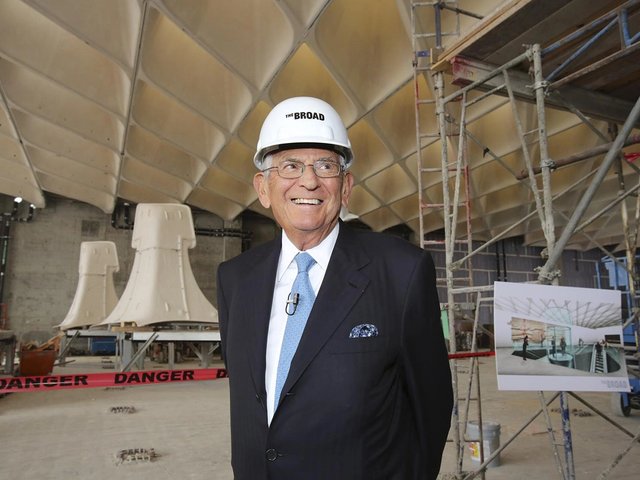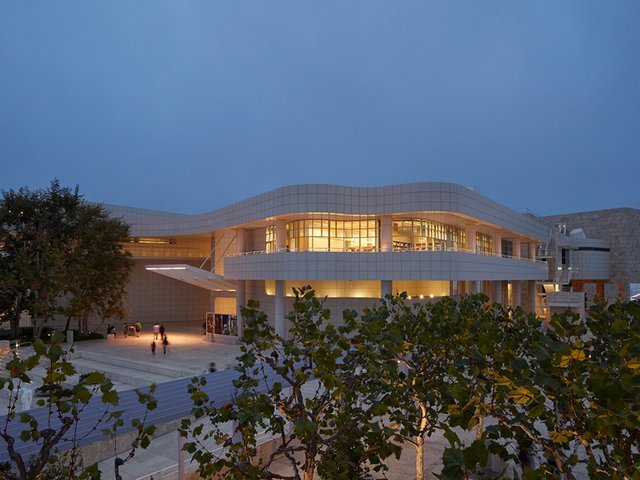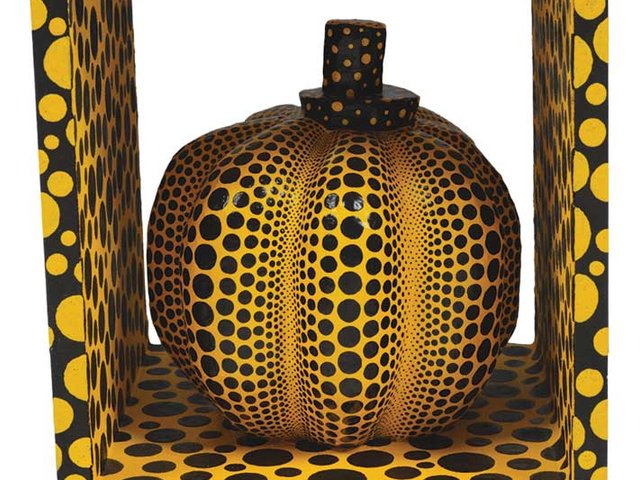A feminist who muscled her way into the Mexican muralist tradition, Judy Baca tends to work outside of museum spaces. She created the celebrated mural known as The Great Wall of Los Angeles on site at the Tujunga Wash, a tributary of the Los Angeles River in North Hollywood, in the 1970s and 80s. Now she is doing a new chapter of The Great Wall in an unlikely space: the Resnick Pavilion at the Los Angeles County Museum of Art (Lacma), where visitors can watch Baca and her crew paint sections of a 350ft panel of fabric stretched out across the Renzo Piano-designed exhibition hall.
The idea came about after Baca had a cluster of museum shows in 2022. “Lacma asked me to do an exhibition, and I just said I’m not so interested in putting my work in a white box,” she told The Art Newspaper recently at the museum, as her team coloured in images of farmworkers’ faces and police helmets before a crowd of high-school students. “It was enlightened of Lacma to do this, because we broke all the rules; we were coming in with paint.”
While The Great Wall covers the immigrant-rich history of California through the 1950s, the new section focuses on the 1960s and 70s, with scenes from the Farmworkers’ Movement, the Chicano Movement and the Watts cultural renaissance. The section comprises acrylics on a lightweight non-woven fabric called Polytab, and will later be applied to the Tujunga Wash wall.
As for how she would rate Lacma as a studio, she says, “I keep getting interrupted, so I’m not getting as much painting done as I would like, but that’s okay, this is important.” As she had told the high-school students a few minutes prior: “This is an important part of American history, a history we need to know.”


